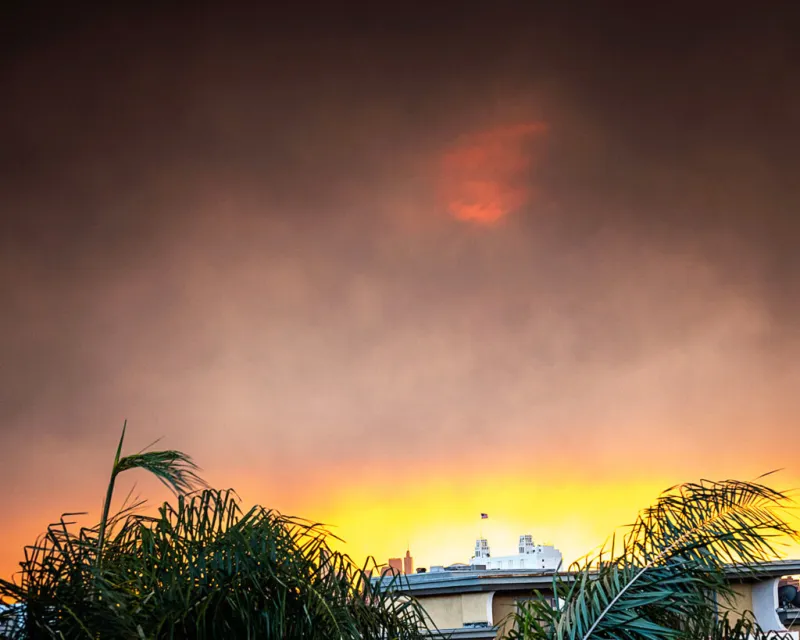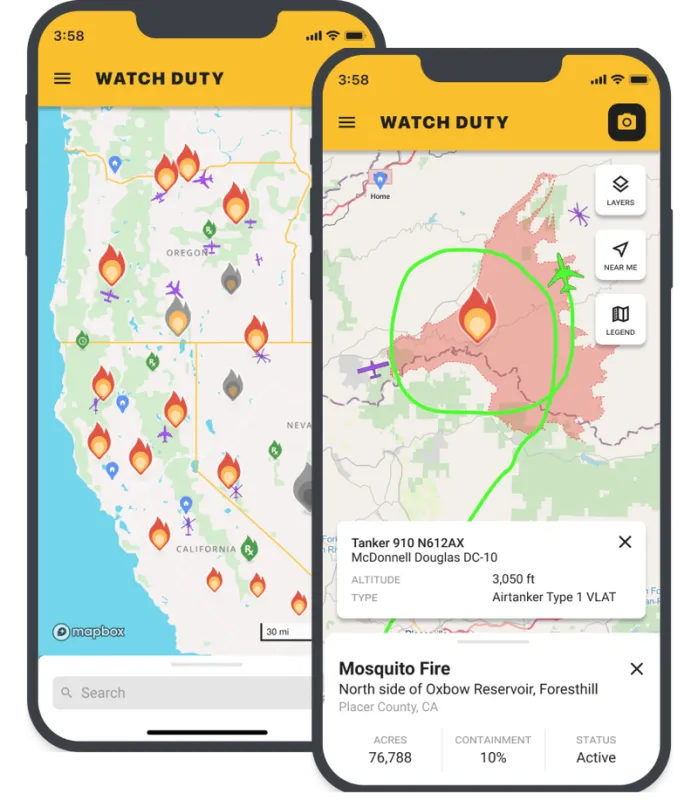

During the historically destructive wildfires in Los Angeles in January 2025, Sekhar Padmanabhan, a graduate student in the online science and technology journalism specialization program, found himself in need of the real-time alerts issued by Watch Duty, a free app where he works as a senior regional reporting manager and staff reporter.
Although he was on the edge of the evacuation order zone, he stayed home with his cats while other reporters covered for him.
“I was watching on Watch Duty, just like everybody else,” Padmanabhan said. “I had the scanner and our Slack channels, but still, it was a very surreal experience.”
He was even interviewed by PBS Newshour to share his accounts as a Watch Duty employee who was also witnessing the fire grow.
Living through a wildfire firsthand and relying on Watch Duty to help him make decisions made him value the nonprofit service even more.
“What we want to do is give people enough information that’s correct, that they can do something with when things are happening, because you don’t always think clearly in an emergency,” he said.
While Padmanabhan’s home survived, he said, “everybody I knew, knew somebody who lost something”—his niece’s classmates lost homes in the Palisades, his sister’s friend’s restaurant burned down in Malibu, and his girlfriend’s doctor’s office burned down in Altadena.
His job carries immense responsibility because not only does Watch Duty serve the general public, it also serves the first responders who use it when risking their lives. In just one night during the January wildfires, 600,000 new users signed up.
It’s been very rewarding to know that we have definitely helped people, given people extra time to get out, grab their pets, grab things they need, and be able to make informed decisions.
Sekhar Padmanabhan
Senior Regional Reporting Manager and Staff Reporter, Watch Duty
Watch Duty, which launched in August 2021, currently provides service to the Western half of the U.S., covering 22 states, and is staffed by 20 full-time employees, including reporters and engineers, and 300 volunteers, including firefighters, dispatchers, and first responders.
The Watch Duty app interface, which alerts users of nearby wildfires and firefighting efforts in real-time.

For its role as a lifesaver, Watch Duty was recently named one of TIME’s Most Influential Companies of 2025 in the Pioneer category and received a 2025 Apple Design Award in the Social Impact category.
Padmanabhan said it’s gratifying to be recognized by these organizations for “doing this kind of, what I call, public service journalism.” More importantly, he’s grateful for the increased awareness and downloads of the app.
“It’s been very rewarding to know that we have definitely helped people, given people extra time to get out, grab their pets, grab things they need, and be able to make informed decisions,” Padmanabhan said.
Padmanabhan, who is nine credits away from graduating and becoming one of the first alumni of the Department of Journalism’s online science and technology journalism program, focused his master’s project on fire science and fire ecology. Specifically, he spoke with scientists who have studied pyrocumulonimbus clouds, which are commonly associated with wildfires.
“Basically, they’re thunderstorms that are generated by the fire,” he explained. “You may have heard something like fires can generate their own weather. Well, that’s what these are, and they can produce their own lightning, and rain, and all sorts of [phenomena].
“They produce these giant columns; some are up to 50,000 feet [and] can be seen from space,” he continued. “Even some of the smaller ones, when they collapse, when they go back down, they can throw a lot of wind out in all directions, which is dangerous for the firefighters on the ground and residents because you can’t predict it.”
Last semester, Padmanabhan wrote a 3,000-word article after interviewing scientists at the U.S. Naval Research Laboratory in Washington, D.C., and the Bureau of Meteorology in Melbourne, Australia. These scientists are working on predicting and modeling pyrocumulonimbus events so that fire managers will have a better idea of what’s coming.
“It really brought me back to what I love doing, which is getting this information out to the public,” he said.
This article is reposted from the College of Media website.